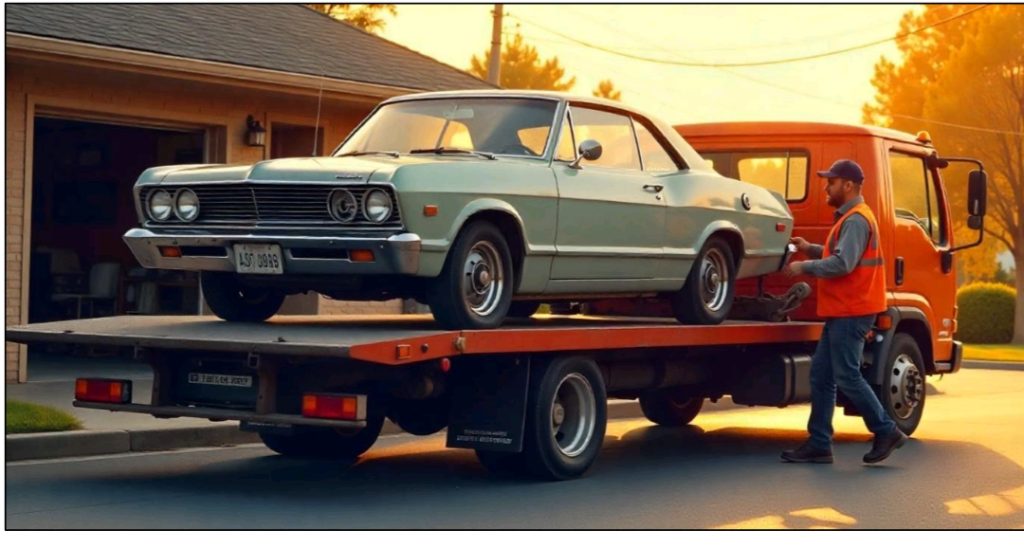Towing a vehicle over long distances is a serious responsibility that requires planning, the right equipment, and an understanding of safety protocols. Whether you’re towing a broken-down car, a trailer, or a vintage vehicle, one wrong move can lead to mechanical failure, traffic citations, or dangerous accidents.
What is in this Article?
- Proper Weight Distribution: Ensuring the load is balanced and within the recommended tongue weight (10-15%) is crucial for stability and control during towing.
- Pre-Tow Vehicle Inspections: A thorough check of both the towing and towed vehicles—focusing on tires, brakes, and fluid levels—helps prevent breakdowns and ensures safety on the road.
- Adapting Driving Habits: Adjusting for towing dynamics, such as reducing speed, increasing following distance, and making wider turns, is essential for maintaining control and avoiding accidents.
If you’re looking for professional help, long distance vehicle towing services are available to ensure a smooth and secure journey—especially for those who prefer expert handling.
Mistake 1: Improper Weight Distribution
Why It Matters:
Uneven load distribution causes trailer sway, unstable handling, and increased wear on your vehicle’s suspension and tires.
How to Avoid It:
- Keep heavier items low and centered over the trailer axle.
- Use a weight-distribution hitch for better stability and handling.
- Check the tongue weight; it should be 10–15% of the total trailer weight.
Pro Tip:
Use a tongue weight scale or a tow calculator tool online to verify your load balance before departure.
Mistake 2: Skipping Pre-Tow Vehicle Inspections
Why It Matters:
Failing to inspect your towing setup can result in blown tires, faulty brakes, or engine overheating mid-trip.
Pre-Tow Checklist:
- Tire pressure and tread (on both vehicles)
- Brake function and fluid levels
- Trailer lights and indicators
- Secure hitch connection and safety chains
- Coolant, oil, and transmission fluid
Pro Tip:
Carry spare parts like fuses, bulbs, tire patches, and fluids, especially for cross-country trips. Alternatively, many car towing companies provide emergency support if something goes wrong mid-transit.
Mistake 3: Using Incompatible or Poor-Quality Equipment
Why It Matters:
Using the wrong tow bar, hitch, or trailer can lead to dangerous disconnections or structural damage.
How to Avoid It:
- Match the towing equipment to your vehicle’s towing capacity.
- Ensure the hitch receiver is properly rated (Class I–V).
- Only use DOT-approved safety chains and breakaway kits.
Pro Tip:
Buy or rent equipment from reputable sources and inspect everything for wear and rust before use.
Mistake 4: Overlooking Local Towing Laws and Regulations
Why It Matters:
Laws vary by state and country—violating them can lead to fines, impounding, or denial of insurance claims.
Common Legal Requirements:
- Brake systems for trailers over a certain weight
- Tail lights, reflectors, and license plates
- Speed limits (lower for vehicles towing)
- Special driver endorsements for heavy loads
Pro Tip:
Use apps or websites like AAA, DMV.org, or regional DOT sites to get towing laws by state or province.
Mistake 5: Driving as if You’re Not Towing
Why It Matters:
Towing increases your stopping distance, reduces acceleration, and affects maneuverability—especially in bad weather.
Safe Driving Practices:
- Reduce speed and avoid sudden lane changes.
- Increase following distance (at least 5 seconds).
- Use lower gears for uphill and downhill control.
- Take breaks every 2–3 hours to avoid fatigue.
Pro Tip:
If you’re new to towing, practice turning, braking, and reversing in an empty parking lot before your trip.
Bonus Mistakes to Avoid:
❌ Not Having the Right Insurance Coverage
Standard auto insurance may not cover damage during towing. Always check and consider adding towing-specific coverage or using a towing service provider.
❌ Neglecting Weather Conditions
Towing in high winds, heavy rain, or snow requires extra caution—or a decision to delay the trip. Bad weather can drastically reduce visibility and traction.
❌ Forgetting Emergency Essentials
Always carry:
- Emergency triangle reflectors
- First-aid kit
- Fire extinguisher
- Flashlight
- Tow straps and jumper cables
Educate Yourself: Resources for Towing Safety
- NHTSA Towing Safety Guide: nhtsa.gov
- Your vehicle’s owner’s manual: Check towing specs and maintenance advice.
- Towing forums and YouTube tutorials: Great for real-world advice from experienced haulers.
Final Thoughts
Towing a vehicle over long distances is more than a mechanical task—it’s a safety-critical operation that demands preparation, the right tools, and constant awareness on the road. By avoiding the common mistakes outlined here, and following the added expert tips, you’ll not only protect your cargo but also ensure your safety and that of others around you.
If you’d rather let professionals handle the job safely and efficiently, consider booking a trusted long distance vehicle towing service to do the heavy lifting for you.
